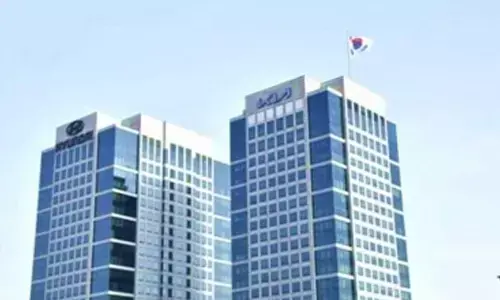IMF pegs India growth higher than RBI's projection

IMF lauds India’s cash transfer scheme
It has brought down its forecast from 9% to 8.2%. This is broadly in line with the projection of 8% to 8.5% made in Economic Survey. But it remains above the RBI’s projection of 7.2% for the current fiscal
In an interesting turn of events, the International Monetary Fund (IMF) has pegged India's growth in 2022-23 at a level higher than the country's own central bank. It has brought down its forecast from 9 to 8.2 per cent. This is broadly in line with the projection of 8 to 8.5 per cent made in the government's annual pre-budget Economic Survey. But it remains above the Reserve Bank of India's projection of 7.2 per cent for the current fiscal. In case this forecast comes true, India will end up being the fastest growing major economy.
It is also noteworthy that yet another multilateral financial institution, the World Bank, expects India to grow by 8 per cent while international financial agencies like Fitch and Morgan Stanley have pegged growth at 8.5 and 7.9 per cent respectively. The relatively optimistic outlook of foreign institutions must be viewed in the context of their perception of the global impact of the Ukraine conflict on economies at varying stages of development. There is no doubt that European countries with their close linkages with Russia and the Ukraine will be affected more immediately by the crisis in the region. In addition, emerging economies that rely on food and fertilizer imports from both these countries will face difficulties in terms of both availability and pricing for these commodities.
India, on the other hand, may actually benefit in some areas owing to the prospects of higher wheat and corn exports to countries which were earlier reliant on supplies from Russia or Ukraine. As for fertiliser imports, Russia has assured it will provide sufficient stocks to meet the needs of the forthcoming Kharif sowing season. Like other countries, it may be affected by the disruption of global supply chains but it is unlikely to face other serious consequences. The biggest impact will be in terms of higher oil prices which have risen to about 108 dollars per barrel currently for the benchmark Brent crude.
In this context, the IMF 's latest World Economic Outlook (WEO) report has commented that higher oil prices are likely to result in weaker domestic demand as these will weigh on private consumption and investment. It also expected the current account in fiscal 2023 to reach 3.1 per cent, a virtual doubling from the 1.5 per cent of fiscal 2022. In addition, it has projected retail inflation at 6.1 per cent, higher than the central bank's forecast of 5.7 per cent.
For the global economy, the report projects growth at 3.6 per cent in 2022 and 2023, lower than the January forecast. China is expected to grow at 4.4 per cent in 2022-23, a downgrade of 0.4 per cent from the earlier forecast. What is more ominous is that it has cautioned that slowing growth in China has wider ramifications for Asia and for commodity exporters.
The projections of the IMF and World Bank are in line with the expectations here as initial fears that the Ukraine conflict would derail growth and the recovery process, have been put at rest. The RBI in its latest monetary policy report has noted that India is not immune from negative externalities referring to the global geopolitical scenario and the war in Ukraine. But it has also commented that India faces these challenges from a position of strength built on broadened vaccine coverage, financial sector resilience, robust export remittances and fiscal reprioritisation to spur capital spending in infrastructure. The report has stressed that spurring private investment remains a key thrust area for sustaining growth on a durable basis.
The big worry, of course, remains oil prices. These are weighing on the economy as oil marketing companies have been gradually raising prices of petrol, diesel, cooking gas as well as aviation turbine fuel and industrial products. The aim is to ensure that the oil companies are able to recover costs of buying crude from abroad. An indication was given recently by the Chief Economic Advisor, Ananth Nageshwaran that there might be some sharing of the cost burden in the coming days. This would three ways, he said, between the government, the oil companies and the consumers. In other words, some subsidy would be provided by the government while the oil companies would shoulder some under-recoveries by pegging retail prices lower than actual production costs. And finally, the consumer would have to share some of the cost of higher world oil prices.
This is an issue highlighted by the IMF as well. It has pointed to the fact that the increased cost of buying crude oil from abroad will lead to a widening of the current account deficit. But this is coupled with higher non-oil imports that have risen owing to the resurgence of industrial growth in fiscal 2022, after the contraction in the previous year. The widening of the current account deficit is manageable given the country's comfortable foreign exchange reserves. And on the plus side, it goes along with the record rise in merchandise exports that have been a consistent bright spot even in fiscal 2021. Last year ended with exports touching the highest ever level of 400 billion dollars.
In the developing world, therefore, India holds out hope that the repercussions of the Ukraine crisis need not become an insurmountable obstacle to revive economic growth in the post-pandemic era. At the same time, much will depend on the course of the war in that country. Unless serious efforts are made by all stakeholders to try and end the conflict, the global impact will only intensify especially in poorer countries that do not have the resilience of larger economies like India. The only solution therefore to bring about economic well being in the world is to seek a peaceful resolution to the war.








